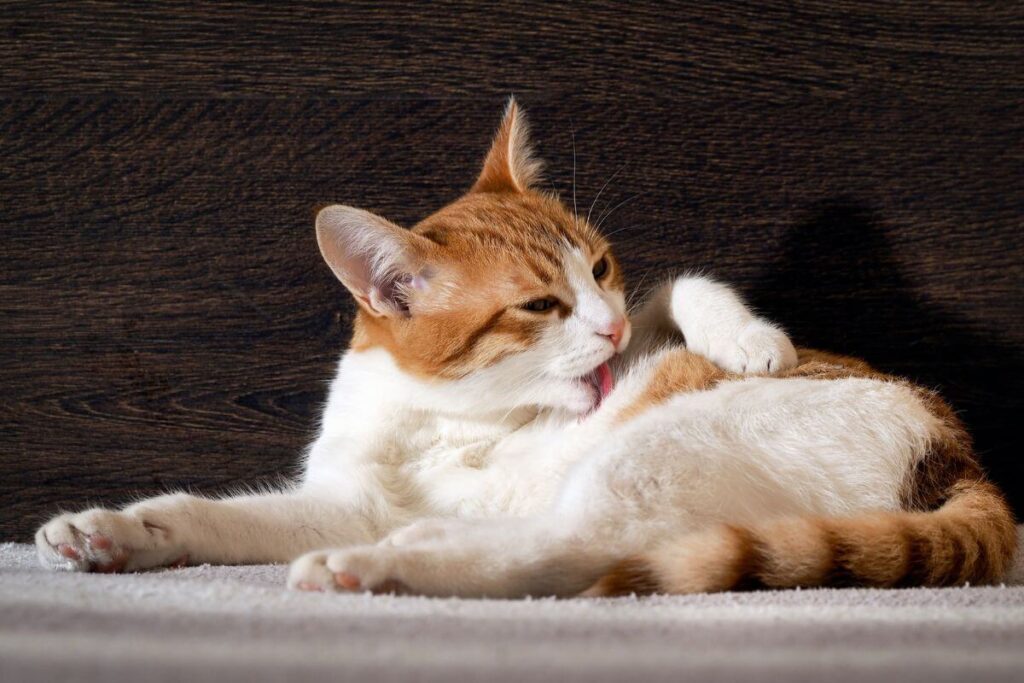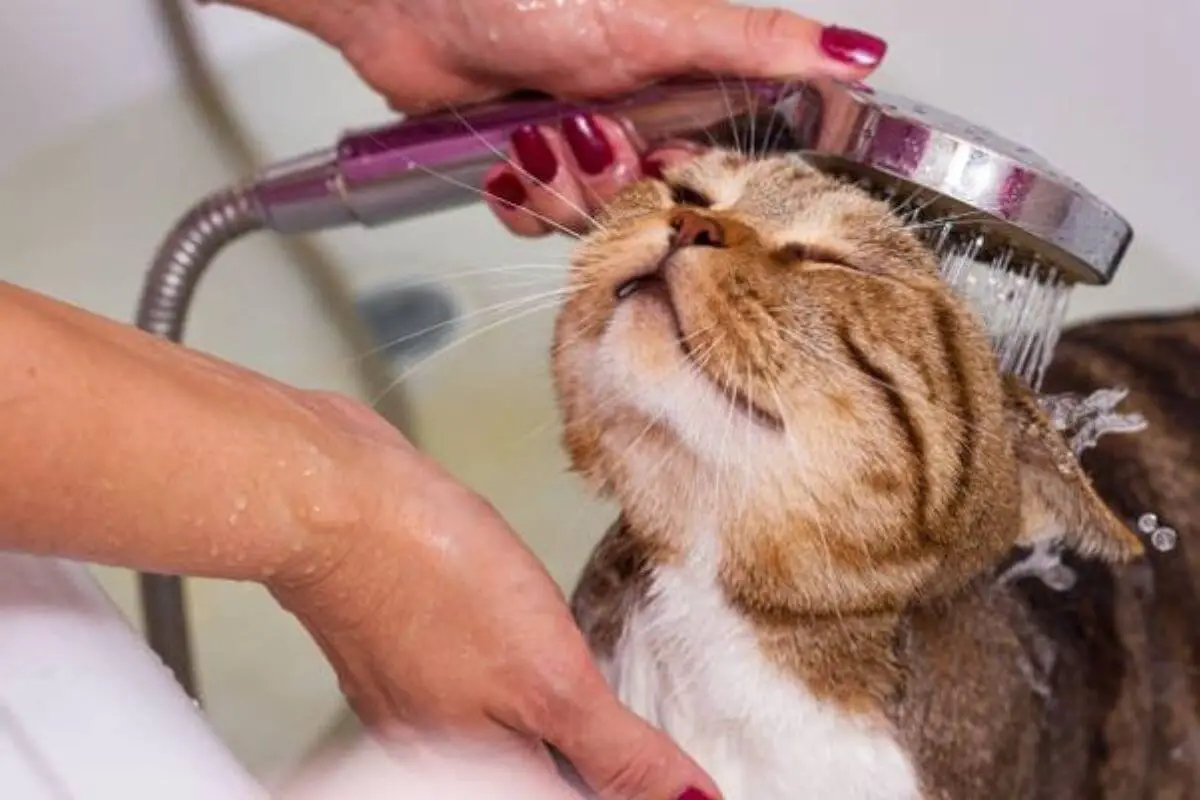Giving your cat a bath can be a challenging endeavor, and the sight of your feline friend shaking vigorously afterward may leave you puzzled. Why do cats shake after a bath, and is it a cause for concern? Let’s delve into the feline psyche and physiology to unravel the mystery behind this seemingly peculiar behavior.
1. The Instinctive Response:
The sight of a cat vigorously shaking itself after a bath is a behavior deeply rooted in feline instincts. Understanding this instinctive response sheds light on why cats exhibit this behavior and helps pet owners navigate the post-bath experience with a greater sense of comprehension.
1. Restoring Control Over Fur:
- Cats are meticulous groomers, spending a significant portion of their waking hours licking and cleaning their fur. Bathing disrupts this routine by introducing water, an element foreign to their grooming rituals. The shaking that follows serves as an attempt to regain control over their damp fur and restore it to a familiar, dry state.
2. Counteracting Water Presence:
Cats, renowned for their dislike of water, often exhibit behaviors to counteract the presence of water on their fur after a bath. Understanding these natural responses can help pet owners navigate the post-bath period, ensuring their feline companions feel more at ease.
1. Vigorous Shaking:
- The immediate and vigorous shaking observed after a bath is a cat’s instinctive response to remove water from their fur. This rapid shaking, often resembling a full-body shiver, is an efficient way for cats to dislodge excess water and hasten the drying process.
2. Self-Grooming Instinct:
- Following the vigorous shaking, cats engage in extensive self-grooming. This instinctual behavior is an attempt to restore their fur to its familiar state. Cats use their tongues to lick and clean their wet fur, facilitating the drying process and maintaining the texture of their coat.
3. Licking and Biting Fur:
- In addition to shaking and self-grooming, some cats may resort to licking and biting their fur after a bath. This behavior is a continuation of their grooming instincts and serves to remove any residual water or perceived foreign elements from their coat.

4. Rolling or Rubbing Against Objects:
- Cats may roll on the floor or rub against furniture after a bath. This behavior, known as “allogrooming,” is a social grooming action often seen between cats. By rolling or rubbing against objects, cats aim to spread their scent and familiarize their environment, providing a sense of security.
5. Seeking Warmth and Comfort:
- Wet fur can make cats feel cold and uncomfortable. After a bath, cats may seek warm and cozy spots to air-dry naturally. Providing a comfortable and quiet space with a soft towel or blanket can encourage your cat to settle down and continue the drying process.
6. Human Interaction for Reassurance:
- Offering gentle petting, soothing words, and positive interaction can reassure your cat after a bath. Human companionship provides emotional support, helping your cat feel secure and less stressed during the post-bath period.
7. Towel Drying Assistance:
- If your cat tolerates it, using a soft, absorbent towel to gently pat them dry can aid in the drying process. Be mindful of your cat’s comfort level and avoid any actions that may cause additional stress.
8. Providing a Safe and Quiet Environment:
- Minimize loud noises and disturbances in the environment after a bath. Creating a safe and quiet space allows your cat to recover from the experience without additional stressors.
9. Monitoring for Signs of Distress:
- While these post-bath behaviors are generally normal, it’s crucial to monitor your cat for signs of distress. Excessive licking, biting, or persistent hiding may indicate heightened stress, requiring attention and possible adjustments to the bathing routine.
10. Gradual Exposure for Future Baths:
- To minimize post-bath stress, consider gradual exposure techniques for future baths. Familiarizing your cat with water and positive reinforcement can contribute to a more relaxed post-bath experience over time.
Understanding and respecting your cat’s natural responses to counteract water presence can enhance the overall bathing experience. By providing reassurance, warmth, and a calm environment, you contribute to a positive post-bath period for your feline friend.
3. Scent Restoration:
- Cats rely heavily on scent for communication and recognition. Bathing not only disrupts the physical state of their fur but also removes scent markers. The shaking behavior is thought to be a method of redistributing saliva, which carries their unique scent, back onto their coat. This process aids in restoring their identity and familiar scent markers.
4. Mimicking Self-Grooming:
- The shaking behavior observed after a bath closely mimics a cat’s self-grooming routine. Cats use their tongues to clean and dry their fur, and shaking replicates the rapid, full-body movements that are part of this natural grooming process. It’s an instinctive attempt to accelerate the drying process.
5. Temperature Regulation:
- Wet fur can make cats feel cold, especially as water evaporates. Shaking generates heat through rapid movement, helping to dry the fur more quickly. This behavior aligns with a natural survival instinct, ensuring that the cat remains comfortable and maintains its body temperature.
6. Stress Release:
- Bathing is inherently stressful for many cats. Shaking serves as a physical outlet for stress and anxiety built up during the bath. It’s a way for the cat to release tension and return to a state of equilibrium.
Understanding that the shaking behavior is deeply ingrained in a cat’s evolutionary and grooming instincts allows pet owners to approach the post-bath experience with empathy. While the shaking may appear puzzling, it’s a natural and instinctive response that reflects the cat’s efforts to restore order and familiarity to its fur and environment.
2. Discomfort and Anxiety:
- Bathing is an unfamiliar and often uncomfortable experience for cats. The sensation of water and the change in their environment can induce anxiety. The shaking may be a physical manifestation of this stress, as cats attempt to shake off the perceived threat or discomfort.
3. Temperature Regulation:
- Cats are highly sensitive to changes in temperature. Wet fur can make them feel cold, and shaking is a mechanism for temperature regulation. The rapid movement generates heat, helping them dry more quickly. This behavior is akin to a natural survival instinct.
4. Stress and Fear:
- For many cats, water is associated with stress and fear. If your cat is not accustomed to baths or has had negative experiences in the past, the shaking may be a stress response. Understanding and addressing your cat’s anxiety during the bathing process can help alleviate this reaction.
5. Disruption of Scent Marking:
- Cats use scent to mark their territory and establish familiarity. Bathing removes the natural scent markers from their fur, leading to a temporary loss of the familiar scent. Shaking is their attempt to distribute saliva, which contains scent, back onto their coat to reestablish their identity.
6. Sensory Overload:
- The entire bathing process, from water contact to drying, can be a sensory overload for cats. The shaking may serve as a way for them to cope with the multitude of stimuli, helping to recalibrate their senses and restore a sense of normalcy.
7. Enhanced Grooming Post-Bath:
- Cats often engage in intensified grooming sessions after a bath. The shaking can be a precursor to this behavior, with cats taking extra measures to restore their fur’s texture and scent through thorough post-bath grooming.
8. Breed and Individual Variations:
- It’s important to note that individual cats and different breeds may react differently to baths. While some cats may tolerate water and shaking more calmly, others may exhibit more pronounced stress responses. Understanding your cat’s unique temperament is crucial in managing post-bath behavior.
Addressing Cat Shaking After a Bath:
- To make the post-bath experience more comfortable for your cat, consider using lukewarm water, speaking to them soothingly, and using a gentle touch. Gradual introduction to water and positive reinforcement can help mitigate stress. Additionally, providing a warm and quiet space for them to air-dry can reduce the need for excessive shaking.
In conclusion, cat shaking after a bath is a multifaceted behavior rooted in a combination of instinct, discomfort, and sensory adjustments. While it’s generally a normal response, closely observing your cat’s behavior and taking steps to make the bathing process less stressful can contribute to a more positive experience for both you and your feline companion.
Mitigating Cat Stress During Baths: Tips for a Purr-fectly Calm Experience
Understanding why your cat shakes after a bath is the first step, but it’s equally important to ensure that the bathing experience is as stress-free as possible. Here are some tips to transform bath time into a more enjoyable and relaxed affair for your feline friend:
1. Gradual Introduction:
- Introduce your cat to water gradually. Start by allowing them to explore an empty bathtub, rewarding them with treats and positive reinforcement. This gradual approach helps reduce the shock of being submerged in water.
2. Use Cat-Friendly Products:
- Choose cat-friendly shampoos and conditioners with scents that are not overpowering. Opt for products specifically formulated for feline coats, as they are designed to maintain the natural oils without causing irritation.
3. Calm Environment:
- Create a calm and quiet environment for the bath. Minimize loud noises and distractions to help your cat feel more at ease. Closing the bathroom door and dimming the lights can contribute to a less stressful atmosphere.
4. Warm Water:
- Use lukewarm water for the bath. Cats are sensitive to temperature changes, and water that is too cold or too hot can increase their stress levels. Testing the water beforehand ensures it’s at a comfortable temperature.
5. Gentle Handling:
- Handle your cat gently throughout the bathing process. Speak to them in soothing tones and maintain a calm demeanor. This reassures your cat that they are safe and helps minimize anxiety.
6. Towel Drying:
- After the bath, use a soft, absorbent towel to gently pat your cat dry. Avoid vigorous rubbing, as this can lead to increased shaking and discomfort. Provide a warm and cozy environment for them to air-dry naturally.
7. Positive Reinforcement:
- Reward your cat with treats and affection before, during, and after the bath. Associating the bath with positive experiences helps create a more positive overall perception of the process.
8. Gradual Exposure to Water:
Introducing your cat to water gradually is a crucial aspect of ensuring a positive and stress-free bathing experience. Cats, known for their aversion to water, can benefit greatly from a patient and gradual approach that helps them become more comfortable with the idea of being bathed.
1. Start with Positive Associations:
- Begin by creating positive associations with water. Place a shallow bowl of water near your cat’s favorite resting spot, allowing them to explore and interact with it at their own pace. Positive reinforcement, such as treats or gentle praise, can help establish a positive connection with water.
2. Moistened Cloth Introduction:
- Before the actual bath, use a moistened cloth to gently stroke your cat’s fur. This introduces the sensation of moisture in a controlled manner, allowing your cat to become familiar with the feeling without the immersion of a full bath. Reward their calm behavior with treats and affection.
3. Gradual Introduction to the Bathtub:
- Once your cat is comfortable with the sensation of a moistened cloth, gradually introduce them to the bathtub. Allow them to explore the empty tub, rewarding curious behavior with positive reinforcement. This step-by-step approach helps demystify the bathing environment.
4. Incremental Water Levels:
- Gradually increase the water level in the tub during these exploratory sessions. Start with just a few inches of water, and observe your cat’s reactions. Keep the experience positive by offering treats and gentle encouragement. The incremental increase in water levels helps acclimate your cat to the sensation of being in water.
5. Positive Reinforcement During Water Exposure:
- As your cat becomes more accustomed to water, incorporate positive reinforcement during actual water exposure. Offer treats, soothing words, and gentle petting to reassure them. This positive association helps build confidence and reduces anxiety associated with the bathing process.
6. Short and Positive Bath Sessions:
- Initiate short and positive bath sessions to further build your cat’s confidence. Use cat-friendly shampoo and maintain a calm demeanor throughout the process. Keep the sessions brief initially, gradually extending the time as your cat becomes more comfortable with the experience.
7. Consistent Routine:
- Establish a consistent bathing routine to provide predictability for your cat. Consistency helps build a sense of security, as your cat knows what to expect during bath time. A regular routine contributes to a more relaxed and cooperative feline companion.
8. Monitoring Stress Levels:
- Pay close attention to your cat’s body language and stress signals during each exposure. If your cat appears overly stressed or agitated, it’s essential to reassess and adjust the pace accordingly. Allowing your cat to dictate the speed of the process contributes to a more positive experience.
9. Professional Grooming Assistance:
- If your cat continues to show extreme resistance, consider seeking professional grooming assistance. Experienced groomers can handle the process efficiently and with minimal stress for your cat.
10. Post-Bath Rewards:
- Reinforce positive behavior by offering post-bath rewards, such as treats or a favorite toy. Creating positive associations not only during but also after the bath contributes to your cat’s overall acceptance of the experience.
By gradually exposing your cat to water in a positive and patient manner, you can help them build confidence and reduce anxiety associated with baths. This approach transforms bath time from a source of stress into a manageable and even enjoyable activity for both you and your feline friend.
9. Professional Grooming Services:
- If bathing your cat at home proves consistently challenging, consider seeking professional grooming services. Experienced groomers can handle the process efficiently and with minimal stress for your cat.
10. Patience and Understanding:
- Every cat is unique, and their response to bathing will vary. Be patient and understanding, observing their cues and adjusting your approach accordingly. Over time, some cats may become more tolerant of baths with consistent positive reinforcement.
By implementing these tips, you can transform bath time from a dreaded experience into a more comfortable and positive interaction. While the occasional shake after a bath may still occur, the overall stress levels for your feline companion can be significantly reduced, ensuring a purr-fectly calm bath time for both of you.
Certainly! Here are some frequently asked questions (FAQs) related to why cats shake after a bath:
FAQS
Why does my cat shake after a bath?
Cats shake after a bath for various reasons, including an instinctive response to regain control over their fur, discomfort and anxiety related to the bathing process, and temperature regulation to counteract the sensation of being wet.
Is it normal for cats to shake after a bath?
Yes, it’s generally normal for cats to shake after a bath. Shaking is a natural behavior that helps them dry off and restore their coat to its familiar state. However, excessive shaking or prolonged distress may warrant further attention.
How can I make bath time less stressful for my cat?
To make bath time less stressful, introduce your cat to water gradually, use cat-friendly products, create a calm environment, use lukewarm water, handle your cat gently, and provide positive reinforcement with treats and affection.
What if my cat is afraid of water?
If your cat is afraid of water, consider a gradual introduction to water, using positive reinforcement, and seeking professional grooming services if needed. Patience and understanding your cat’s unique temperament are key to reducing fear and anxiety.
Is it necessary to bathe my cat?
In general, most cats groom themselves effectively, and regular bathing may not be necessary. However, certain circumstances, such as medical conditions or the presence of substances on their fur, may require bathing. Consult with your veterinarian for guidance.
How can I dry my cat after a bath without causing more stress?
Towel dry your cat gently, avoiding vigorous rubbing. Provide a warm and cozy environment for them to air-dry naturally. Using a low-heat setting on a hairdryer, if they tolerate it, can also be an option, but be cautious and keep a safe distance.
Should I avoid bathing my cat altogether if they don’t like it?
If your cat strongly dislikes baths, consider alternatives like spot cleaning or professional grooming services. It’s essential to prioritize your cat’s well-being and find grooming methods that are tolerable for them.
How often should I bathe my cat?
Most cats do not require frequent baths, as they are adept at self-grooming. However, specific situations, such as medical conditions or accidental messes, may necessitate occasional baths. Consult with your veterinarian for guidance on your cat’s individual needs.
Can shaking after a bath be a sign of a health issue?
While shaking after a bath is generally normal, excessive shaking or signs of distress may indicate an underlying health issue or extreme stress. If you observe consistent or concerning behavior, consult with your veterinarian for a thorough examination.
What can I do if my cat consistently dislikes baths?
If your cat consistently dislikes baths, focus on gradual introductions, positive reinforcement, and seeking professional grooming services. Some cats may never fully enjoy baths, and finding alternative grooming methods that they tolerate is crucial for their well-being.
Remember that each cat is unique, and understanding their individual preferences and tolerances is key to ensuring a positive bathing experience.




